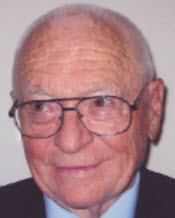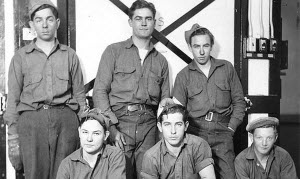Learning life outdoors: Old idea, new generation
Dick Laing recalls with pride working with Michigan Tech Universityon a residential “boot camp” style program in forestry and conservation skills in the Upper Peninsula that helped disadvantaged youngsters develop life skills. The program eventually fell victim to budgetary neglect, he says.
Laing never doubted, however, the value of the effort to put children from urban areas out into the natural wonders of Michigan.
Additionally inspired by the efforts of the Center for Michigan this year to collect public input on improving K-12 learning, Laing wants to team up again with Michigan Tech to revive a version of the forestry program for 40-50 kids in Flint and locate it on the 500-acre campus of Genesys Hospital in suburban Grand Blanc, where Laing serves on the board of its Physicians Health Organization. Laing's endeavor would be in cooperation with Tech's Civil Sustainability Corps Program, which is to be based out of Alberta in the Upper Peninsula. In time, Laing thinks the state Department of Natural Resources can become a contributor, too. Eventually, he hopes the idea can grow and link up with other similar programs around Michigan, drawing financial support from the business community. Bridge Magazine spoke with Laing recently to learn more about his idea and his inspirations for public service.
Bridge: What exactly do you have in mind for the Flint program? Location? Enrollment? Results?
A: Obviously, the Flint campus would have to be a recruiting area for the Michigan Tech program; we would recruit and screen kids until we have about 40 or so individuals. Ideally, if we have enough money and time, the recruiting process will take about two to three months.
We will put them through some rigorous orientation, including a trip Up North to see what they are getting themselves into. I would also have them read “Proud to Work” – the first third of the book details the original Civilian Conservation Corps program (President Franklin) Roosevelt set up in 1933, while the rest of the book highlights the CCC program based on Gov. (Jim) Blanchard’s program in the '80s and eventually Gov. (John) Engler’s program in the '90s. Michigan Tech was involved in these processes all along. The author is Annick Hivert-Carthew, an author who lives right around the Metro Detroit area.
While this hasn’t been approved by the management of GenesysHospital, a Genesee County organization is looking at the possibility of the recruiting process. We may be able to handle sleeping arrangements; we will feed them three meals a day – focused on changing their habits. We are trying to put organization and regimentation into their daily lives … and the program will be aimed primarily at foster children. These are the poorest of the poor that we want to help and assist in bettering their situations. We would like to increase graduation rates in their lives, because until you do that, you can’t really attack any of the problems they may have already.
The reason we know this works is because the military does this on a daily basis; they recruit about 180,000 recruits a year, between the ages of 18 and 22. This includes National Guard, ROTC, etc… it’s the basic training that counts. A lot of the basic training is the same whatever branch of service you are in. The only difference is that during the 1930s, the Army did run a Civilian Conservation Corps -- the money now has to come from the big corporations, because it’s difficult to depend upon Congress to do these kinds of things nowadays.
The business community has tons of money that they don’t have anything to do with. They aren’t going to give us any funding, though, without this our concrete plan.
Bridge: How does this idea fit in with what Flint needs right now to aid youth?
A: Increase graduation rates -- that is the simplest, bottom line. If we can increase graduation rates, we can change the whole dynamic. I am a very practical kind of guy, and this is a problem that the country has to solve. It’s been around for so long -- youth poverty and drop-out rates --we need to work on solutions. I think this is a great opportunity to propel students in the right direction. They need to achieve that diploma.
When kids graduate, all kinds of doors open up to them … I mean, any job these days, you need a diploma. When we’re feeding them three meals a day -- through this program -- they are essentially doing all of the prep and service work. By the time they are done with this program they could walk into any restaurant and get a job. They may not want to do that for the rest of their lives, but they can earn some money and eventually find another, better job.
Another thing we’re focusing on is urban gardening. We have 500 acres of land up there … so, we’d dig up the ground and grow all kinds of fruits and vegetables. This urban gardening, or farming, has become such a big thing. The instructors in these programs will be coaches.
Bridge: What kind of budget are you talking about?
A: Michigan Tech wants to hold down $25 million to start. Because it is in the very early phases, I don’t have anything on the business community pitch process.
Someone needs to stick their neck out for these youth. You have to take a risk or there will never be a concrete solution. The crime and poverty rates are astounding, and if you ask kids why they do drugs, they often respond with: “There is nothing else to do.”
Kids need some leadership, some heavy-duty coaching. You have to work with them 24/7 in order to make it work. This program is a solution that we can use to hold youth responsible for their futures.
Bridge: ow did the CFM community conversation you attended spark your thinking on this?
A: Well, as soon as Bridge Magazine talked about how they were going to hold the community conversations, I called and spoke to (CFM Outreach Director) Courtney Thompson and scheduled one back in February.
One of the questions that she asked during the conversation was whether or not they should extend the school year?; well, sure -- you can tack a few extra days to the school year, but it’d cost the government a billion dollars. Instead, why not enact summer programs?
As you go through the fall and winter and you’re planning for next summer, you can hire all kinds of folks to run these programs in the summer, and then let various businesses tell us what they want us to teach in order for these kids to succeed in the working world.
Kids will come to us all the time and tell us that they can’t do the work. We can’t go in and change public education, it’s too big and it’s too hard, so this is an alternative option. We could run a summer program and offer a unique solution… and see what the outcome is.
If you look at Colin Powell’s "Five Promises," the first one is that there needs to be a caring person. The second one is a safe place. The third one is adequate medical care. The fourth one is education. And the fifth one is the opportunity to give back; in other words, with these things kids can thrive and eventually give back to their communities.
Bridge: What are your personal/historical inspirations for the concept?
A: I knew a lot of the original contributors to the CCCs from back in the 1930s. Their work was always a reinforcement of what I already believed in … and it inspired me to work with the "Bring Back the CCC Committee." Their focus on organization and regimentation really rang true in my belief that a focused program will really, truly help these at-risk youth in Flint.
No one wants to go to school and be defeated every day, so the number of students failing out of school really encouraged me to work towards this program, as well. I want to work on this program as a more inclusive way of helping kids graduate from school to better themselves and their futures. We’ll have them 24/7, so if they can’t read, we’ll teach them to read. One of the keys is that we want them to stay enrolled in their home schools, so that they can be involved in the head count.
We don’t want to be an enemy of the public school system. We want each youth participant to go back and graduate with their class. Once they have the high school diploma, again, all kinds of doors for them will open.
To go back to my own experience, when I went to a basic training camp down in Kentucky many were from the Deep South. It was very poor, and it was also one of the first integrated armies. We realized there were some trust issues… and initially, it was rough, but by the time it was done, we were OK. And it was only 120 days long. It took about 60 days before you could see that things were really starting to come together. By the end of the day, we were a team.
We weren’t necessarily the best soldiers yet, but we were leaders. That is what we want out of this program – we want leaders. You can’t teach these kids if they aren’t present.
Jina Sawani is a freelance writer and graduate of Michigan State University, where she received her bachelor's degree in psychology.
See what new members are saying about why they donated to Bridge Michigan:
- “In order for this information to be accurate and unbiased it must be underwritten by its readers, not by special interests.” - Larry S.
- “Not many other media sources report on the topics Bridge does.” - Susan B.
- “Your journalism is outstanding and rare these days.” - Mark S.
If you want to ensure the future of nonpartisan, nonprofit Michigan journalism, please become a member today. You, too, will be asked why you donated and maybe we'll feature your quote next time!



